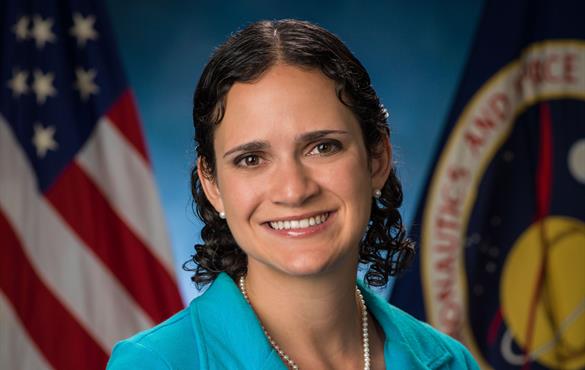Leah Honey
For some people, spending 30 days in a closed living area monitored by cameras at all times may seem daunting, but for alumna Leah (Pike) Honey, it was her idea of fun

In February 2016, Honey, who earned a bachelor's degree in mechanical engineering from the School of Engineering & Applied Science in 2006 and is now a flight controller at Johnson Space Center in Houston, and three other women took part in NASA's first all-female-led Human Exploration Research Analog (HERA), a 30-day simulation of a 700-day, near-Earth asteroid mission. The crew lived in a two-story enclosed habitat at Johnson Space Center in Houston during which they simulated a live mission, including daily communication with Mission Control, but only 30 minutes a week to talk with family. They also took part in numerous biological tests and tried new foods designed for maximum energy and reduced mass, including some rather dense, 700-plus-calorie breakfast bars. While Honey compared the experience to "living in a fishbowl for 30 days," she enjoyed it thoroughly.
"It makes a big difference who is selected to be on the crew together, and my crew had a lot of fun," she says. "We got along very well. Overall, the experience was challenging and pushed me out of my comfort zone, but it was more fun than stressful by a longshot."
Honey and the rest of crew, which included a NASA scientist, a structural design engineer and a physician/researcher, trained for two weeks before the mission began, then had a one-week debriefing. During the mission, they conducted experiments involving sea monkeys, plants and a 3-D printer, but spent a lot of time training for spacewalks to the asteroid using virtual reality.
The experience was seven weeks away from Honey's daily job, in which she works for the contractor Leidos to keep the International Space Station in operation.
"When things break, we figure out how to fix them," she says. "We're installing new hardware that needs coolant lines but also needs power running into it from a different module, so we have to go behind the wall and get all of the right pipes and the right cables to the right hardware and figure out how to do it on the ground, then write procedures for the crew to execute it on the Space Station. We're there in the flight control room to help them out when things don't go exactly as planned."
For Honey, being a flight controller is the only job she ever wanted, thanks to the 1995 movie "Apollo 13," based on the real-life mission of Apollo 13 in 1970.
"Growing up I said I wanted to be an astronaut, until I saw 'Apollo 13,'" she said. "It was the particular scene where the flight controllers had to fit the square peg into the round hole to make a carbon dioxide filter, and at that moment, I said I wanted to do that rather than be an astronaut. I realized that flight controllers get to do more of the problem-solving and the puzzles and making things work. I never had a Plan B."
Honey credits her experience as a mechanical engineering student at WashU for preparing her to work well with a group in her career.
"At WashU I did almost all of my problem sets with a group of five or six of us," she recalls. "That kind of syncing with a group and bouncing things off of each other, and not just locking myself in my room and working alone is definitely the same kind of environment I work in now."
Back to Engineering Momentum